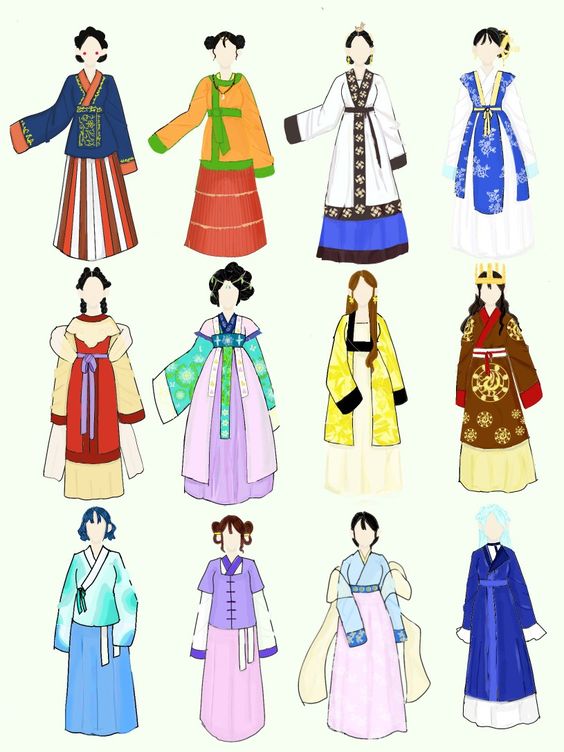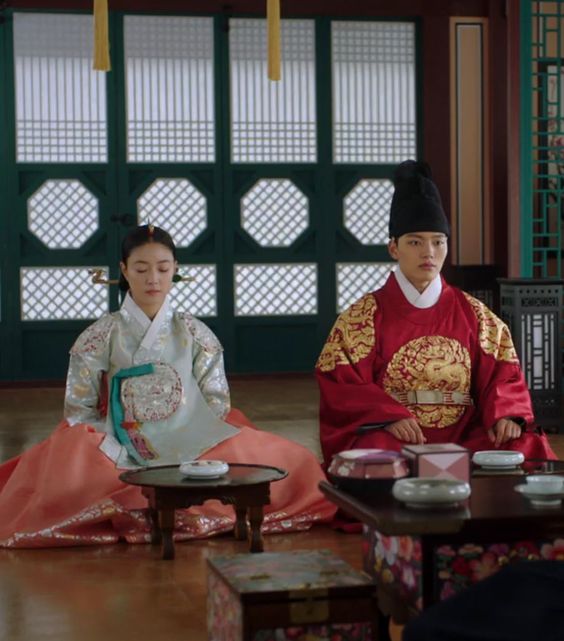

Change Over Time
Hanbok has evolved over the centuries, influenced by various historical periods, changes in social structures, and interactions with neighboring cultures. While the term "dynasties" is not specifically applicable to Korea as it is to China, Korea has experienced distinct historical periods that have shaped the development of Hanbok. Here's a brief overview:
- Goguryeo and Three Kingdoms Period (37 BCE–668 CE): The earliest form of Korean clothing was influenced by nomadic cultures, featuring loose-fitting garments made from basic materials like ramie or hemp.
- Unified Silla and Goryeo Dynasty (668–1392): The clothing became more refined and sophisticated during the Unified Silla and Goryeo periods. Hanbok started to take on a more recognizable form with distinct upper and lower garments. The use of bright colors and intricate patterns became more common.
- Joseon Dynasty (1392–1897): The Joseon Dynasty brought significant changes to Hanbok. A more subdued color palette became prevalent, reflecting Confucian ideals of modesty and simplicity. Jeogori (jacket) and chima (skirt) for women, and jeogori and baji (pants) for men, became standardized forms.
- Late Joseon and Early Modern Period (17th–19th centuries): During this period, Hanbok continued to evolve with the introduction of new materials and styles. Class distinctions were reflected in the quality and color of clothing.
- Late 19th Century to Early 20th Century: Western influences began to impact Hanbok, particularly in the late 19th and early 20th centuries. Some elements of Western fashion, such as tailored jackets and hats, were incorporated.
- Japanese Occupation (1910–1945): The Japanese occupation brought about more significant changes, with attempts to suppress Korean culture. Hanbok styles became simplified and less elaborate during this time.
- Post-Liberation (1945–present): After Korea's liberation from Japanese rule, there was a revival of interest in traditional Korean culture. Hanbok underwent a resurgence, with designers incorporating both traditional and modern elements. Today, Hanbok continues to be worn on special occasions and is celebrated as a symbol of cultural identity.
Throughout these periods, Hanbok has demonstrated remarkable adaptability, blending tradition with practicality and aesthetics. The clothing remains a source of pride and an integral part of Korea's cultural heritage.